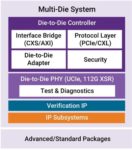High volume manufacturing is a 24/7 business with 12 hour shifts. You don’t always get to pick the shifts you want and you must cover for others when they can’t. It’s a challenging career and not for the faint of heart like myself.
In the 1980s and 1990s I spent time in Japan working with some of the top Japanese semiconductor manufacturers. It was an amazing experience but I walked away wondering how the US would be able to compete. The Japanese people I met worked very hard to honor their families and country. Back in the United States we worked 9-5 for a paycheck. Morris Chang knew this from his experience at TI and that is why he headed to Taiwan.
As I have written, Taiwan’s early start into semiconductors did not begin with Morris Chang but he does figure in prominently in Taiwan’s rise to dominance. Here is a brief biography of Morris (ChatGPT 4.0):
“Morris Chang (张忠谋) is widely recognized as the father of Taiwan’s semiconductor industry. Born in 1931 in Ningbo, China, Chang moved to the U.S. in the late 1940s, where he pursued higher education in the field of physics and engineering.
Here are a few key points about Morris Chang:
- Education: Morris Chang holds degrees from several esteemed institutions. He received a B.S. and M.S. in Mechanical Engineering from the Massachusetts Institute of Technology (MIT) and a Ph.D. in Electrical Engineering from Stanford University.
- Texas Instruments: Before his endeavors in Taiwan, Chang worked at Texas Instruments (TI) in the United States for 25 years. During his tenure there, he held various senior positions including Group Vice President of the Worldwide Semiconductor Group.
- Taiwan Semiconductor Manufacturing Company (TSMC): In 1987, Chang founded the Taiwan Semiconductor Manufacturing Company (TSMC). TSMC is the world’s first dedicated semiconductor foundry, meaning it manufactures chips for other companies without designing its own products. This business model transformed the global semiconductor industry, enabling a myriad of fabless semiconductor companies to focus on chip design without having to invest in expensive manufacturing facilities.
- Economic Impact: Under Chang’s leadership, TSMC became a cornerstone of Taiwan’s IT industry, propelling the country into a major role in the global semiconductor market. Taiwan’s importance in chip manufacturing can’t be overstated, with TSMC at the forefront of cutting-edge semiconductor technology and production.
- Retirement: Chang retired from TSMC in 2018, but his influence in the semiconductor world and his legacy as a pioneer in the foundry business model will persist for years to come.
- Recognition: Chang has received numerous awards and honors over the years in recognition of his contributions to the semiconductor industry and his visionary leadership.
In summary, Morris Chang is a seminal figure in the semiconductor industry, especially in the foundry business model. His leadership and strategic vision not only transformed the industry but also elevated Taiwan’s standing in the global tech ecosystem.“
From a semiconductor insider’s point of view, there is a lot more to this story. Morris started his education at Harvard but MIT turned out to be more to his liking both financially and technically. For engineers, MIT was the place to be and Morris was an engineer at heart. Morris chose mechanical engineering but he quickly became obsessed with the transistor during his first job right out of college.
After graduating from MIT (1955) Morris went to work for Sylvania, a company with a long history in lighting and electronics. After 3 years Morris wanted to go where the transistor innovation was and that was Texas Instruments. His dream was to be the head of the central research labs at TI but Morris did not have a PhD, or even a degree in electrical engineering. In fact, he twice failed a qualifying exam for a doctoral degree at M.I.T.
Morris first worked in the germanium transistor business which would soon be surpassed by the silicon transistor. TI was IBMs major supplier (20% of TI’s revenue) and Morris was in charge of the IBM program. Getting yields ramped up was the first big challenge for Morris. He burned the midnight oil and cracked the yield code and became a hero. Morris was promoted to the head of the germanium transistor program and in 1963 he was sent to Stanford to get his PhD for further advancement. He Finished the PhD program in a record time (2.5 years) while still spending time at TI.
When Morris returned to TI full time, germanium was no longer leading edge technology so Morris took a leadership position with the TI IC group. Morris’s influence grew and in 1973 he became head of the semiconductors group and again became a hero. TI was the king of TTL (Transistor – Transistor Logic) with a 60% market share and more than $1B in revenue, but TTL was soon replaced by MOS and TI lost the MOS race.
SemiWiki: Texas Instruments and the TTL Wars
Morris’s downfall at TI was MOS memory and microprocessors. Other companies caught up with TI (Mostek) and in some cases surpassed them. Microprocessors became the next big thing and TI had the first microprocessor patent, not Intel or Motorola. When IBM chose the Intel 8088 microprocessor for their first personal computer over the TI TMS9900 and the Motorola 6800 (amongst others), Morris took this as a personal defeat.
In 1977 Morris’s departure from TI officially started when he was removed as Group VP of Semiconductors and became Group VP of Consumer Products, a somewhat troubled business at the time (calculators and toys). Morris was then moved to head of corporate quality and his fall from grace was complete. Morris wasn’t fired from TI but his departure was not unexpected.
Morris then spent a difficult two years (1984-86) at General Instruments under CEO Frank Hickey before calling it quits and heading to Taiwan. I was a field engineer for GI during the Hickey era (1979-82) and it was a tumultuous time for the company, absolutely.
Bottom Line: The work ethic and experience Morris developed through his career with innovative electronic and semiconductor companies was the perfect foundation for the customer centric pure-play foundry model that is TSMC. It should be noted that TI is today a semiconductor powerhouse, one of the longest standing semiconductor companies in the world. TI is also a long standing customer of TSMC.
To be continued…. How Philips saved TSMC!









